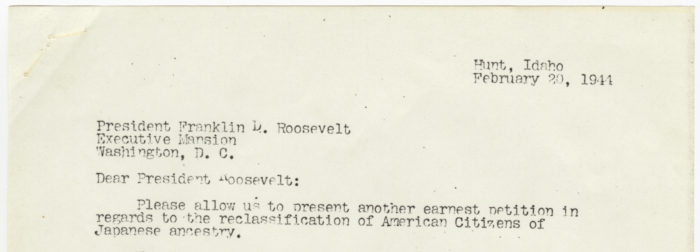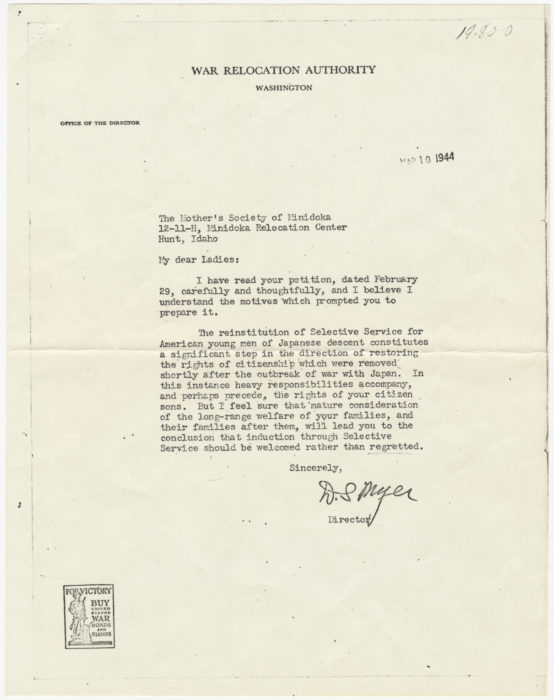
Japanese American National Museum, Gift of the Miyaoka Family (94.55.5)
Read this letter excerpt.
- Who is the letter being sent to?
- What do you know about the writer(s)?
- The writer(s) chose each word carefully. What might be the reasons this letter says, “American Citizens of Japanese ancestry?”
In 1944, three years after the United States entered World War II, the federal government reclassified Japanese Americans as eligible for the military draft. This meant young men living in Japanese American concentration camps and previously considered unfit for service began to be drafted to serve in racially segregated US military units. Imagine the impact this had on those who were in the camps.



